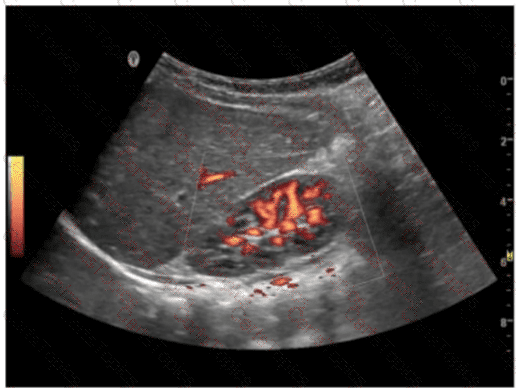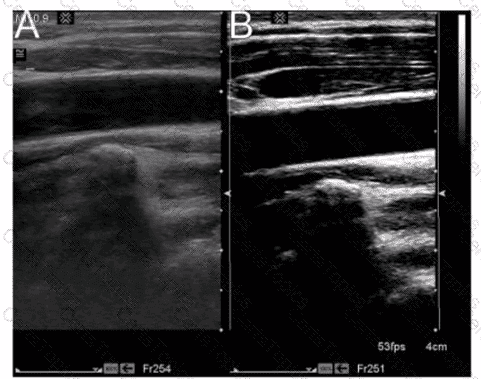Comprehensive and Detailed Explanation From Exact Extract:
Persistence is a post-processing technique that averages multiple consecutive image frames to reduce random noise and improve image smoothness. This is especially useful for reducing speckle and enhancing the clarity of stationary or slow-moving structures.
According to official sonography Principles and Instrumentation documentation:
"Persistence uses frame averaging, combining data from several sequential frames to reduce noise, enhance image quality, and stabilize the appearance of stationary structures."
Demodulation (A) is part of signal processing that extracts the Doppler frequency shift.
Compression (C) alters the dynamic range of the image but does not reduce noise through frame averaging.
Time gain compensation (D) adjusts amplification at various depths to equalize brightness but does not perform frame averaging.
Therefore, the correct answer is B: Persistence.
QUESTION NO12
What does this image demonstrate?
 A ultrasound of a fetus
Description automatically generated
A ultrasound of a fetus
Description automatically generated
A. Presence of flow
B. Direction of flow
C. Color aliasing
D. Color inversion
Answer: C
Comprehensive and Detailed Explanation From Exact Extract:
In the provided image, the color Doppler display shows a mixture of colors (typically red, yellow, and shades shifting abruptly), indicating that velocities have exceeded the Nyquist limit — the maximum detectable Doppler shift for the given pulse repetition frequency (PRF). This creates a color aliasing artifact.
According to the official sonography Principles and Instrumentation documentation:
"Color aliasing occurs when flow velocities exceed the Nyquist limit, causing a wrap-around of the color scale. This results in abrupt changes in color hue that do not accurately represent flow direction or velocity."
Presence of flow (A) is correct but too general.
Direction of flow (B) refers to color assignment but not to the artifact seen.
Color inversion (D) inverts the color map but does not cause the abrupt color changes seen here.
The alternating, banded colors are classic for color aliasing, confirming that the correct answer is C: Color aliasing.
